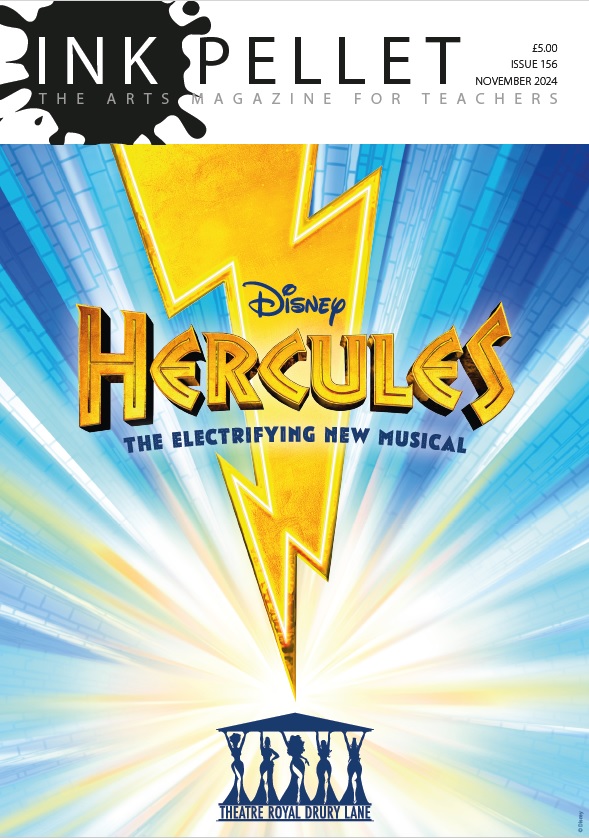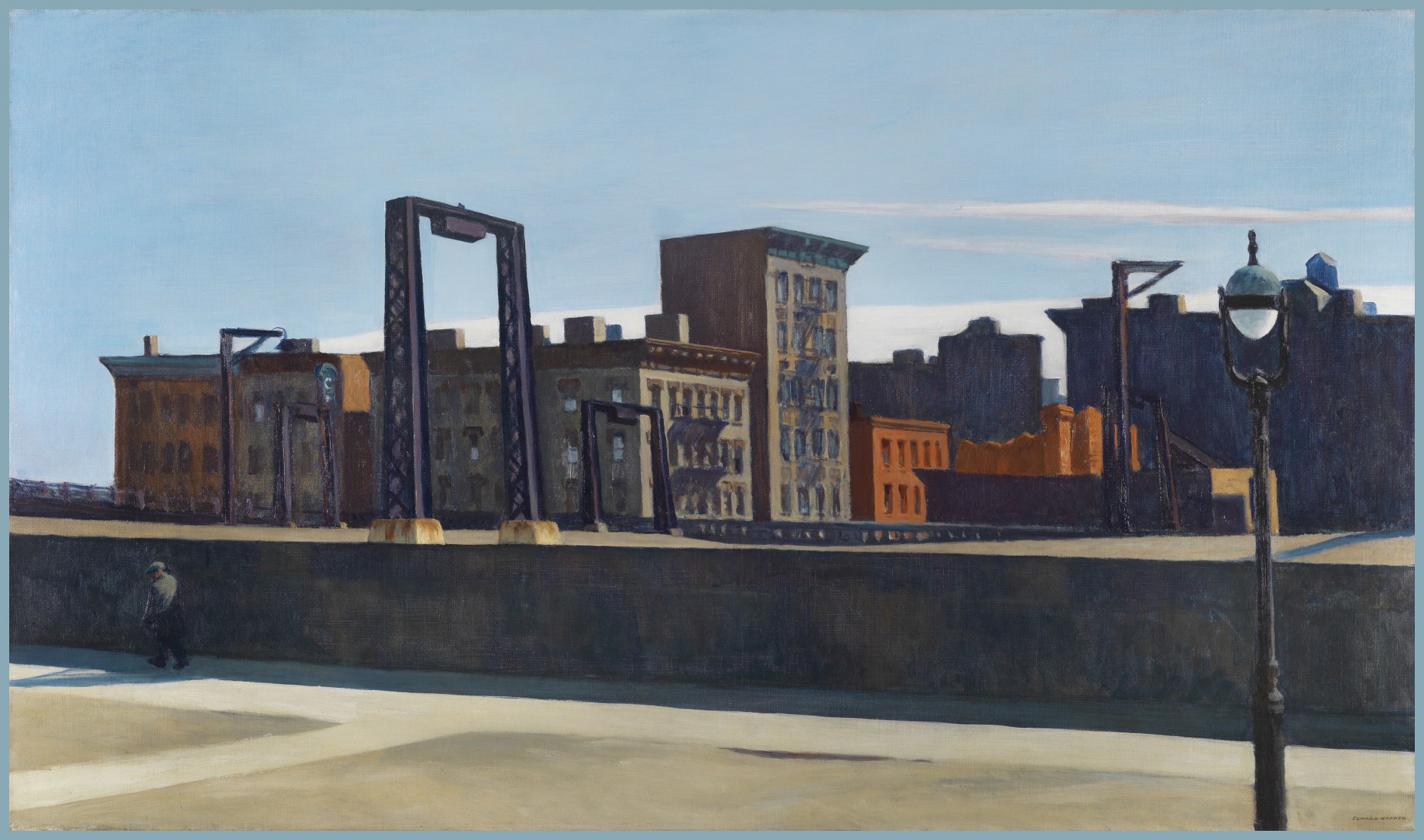Our regular exhibition correspondent, Graham Hooper, marks your card for the wonderful array of exhibitions across the country this coming year.
Every year seems to bring ever-bigger exhibitions. Each venue competing for higher profiling and each time it feels as though tickets get more expensive. I used to walk in off the street, no need to queue, and managed a clear view. Now there’s online booking and I elbow through crowds in the hope of catching an unobstructed sight of the entire painting. I like to see the whole work and get up close, to look along the edges, admire the brush strokes and then move back to understand the piece alongside its neighbours.
Anyway, 2017 was a delight for any Art lovers. The British Museum had a vastly under-rated survey of post-war American print, which I could have visited without any noticeable fatigue, on a daily basis, so enthralling was the material on show. I dare say if it had been paintings by the same list of famous artists, if it were possible to gather such a collection, they’d be able to keep the doors open around the clock for a year. The Royal Academy also pulled some very comprehensive crowd-pleasers out of the bag: America Pre-war and of course their Abstract Expressionists exhibition really was a once-in-a-lifetime opportunity. The centenary of the Russian Revolution was marked by shows again at the Royal Academy and Tate Modern, whilst the Barbican ended the year with a retrospective of the ever-popular New York street art of Basquiat. Whilst America and Russia were big in the news and not just in the gallery, Tate Britain and the Walker gallery in Liverpool celebrated 50 years since the landmark Sexual Offences Act decriminalised gay relationships.
Sculpture got a good airing too, which is a treat not least because it is that much harder to gather together than canvases, even large and unwieldy Jackson Pollocks. So we got Rachel Whiteread at Tate Britain, Henry Moore at The Lightbox in Woking. Japan was profiled with displays of Hokusai‘s famous woodblock waves at the Britain Museum, but also a study of its architecture at Barbican in London. Exuberant paintings brought crowds flocking to see Howard Hodgkin’s abstract paintings at the National Portrait Gallery, sadly posthumously as it turned out, and David Hockney – now in his eightieth year, and still busy. Oxford showed off French Modernism and the Science Museum displayed a history of Robots, combining arts and technology in fun and captivating ways.
The coming calendar year promises to host another set of sell-out and not-to-be-missed exhibitions. After no less that three shows of Giacomelli, wonderful as his stick figures are, and they are utterly beguiling, the big venues are working a bit harder it seems. The National Gallery of Scotland continues to front a Frenchman with the cabaret posters of Toulouse-Lautrec. His dancers from turn-of-the-century Paris capture the dynamism of the café culture, whilst also marking the start of the poster as a mechanism for mass-market publicity. The painterly snapshots, in pen and ink, can be frivolous and brash, or intimate and sensitive depending on whether we see his subjects on or off stage. Colour and text combine with clever technique to create graphics worthy of the modern age.
Pallant House in Chichester has found or created another excuse to boast its significant and unique collection of British Pop Art. Big names such as Peter Blake, Patrick Caulfield and Richard Hamilton will all be present. Their current showing of Paula Rego’s sketchbooks is a rare chance to view more artist backstage activity, and demonstrates how otherwise seemingly provincial galleries can easily punch above their weight with clever scheduling. Her figurative studies, taking their cue from fairy tale and folklore, evidence craft and are a pleasingly reminder of the power and pull of the human body in art, much like the current RA’s From Life, as it turns 250 years old, and looks back at the roots of academic artistry. Jenny Saville’s large-scale paintings and drawings of women going under the knife are all but Renaissance in scale and intricacy. Anthony Gormley and Gillian Wearing are two British contemporary practitioners who continue to investigate what it means to have a body, and with it a physical presence, conscience awareness and spiritual manifestation. Whilst the Oxford’s Ashmolean will draw the public through the door with their America’s Cool Modernism it may fell like deja-vu for those who’ve seen similar or identical work in London in the last 12 months. Still, a Georgia O’Keefe or Edward Hopper is lovely to see in the flesh. Great painting is always great painting.
London’s Hayward gallery finally re-opens after two years for refurbishment and repair with a major overview of the German Photographer Andreas Gursky. His epic light box images – of Amazon warehouses or the Tokyo stock exchange – will remind us of the complex and dense world that we rarely witness as a consumer but might benefit from or rely on each day. His scenes are abstract glorifications of pattern and scale but also questions about the mechanics of commerce and globalisation.
Photography will get the lion’s share of blockbuster exposure in 2018. After the giant Gursky extravaganza Tate Modern will be exploring the relationship between the medium and abstract art, with Thomas Ruff (recently reviewed for Ink Pellet) alongside Man Ray and other key originators of the form, in Shape of Light. Meanwhile the National Portrait Gallery will be housing work by the Victorian masters as it looks at the birth of Photography in Britain, where Julia Margaret Cameron and Oscar Rejlander played key roles in establishing what was otherwise a scientific process as an art in its own right. The Hepworth Wakefield will not be overshadowed by staging the images of Lee Miller; muse of the Surrealists but a magnificent and seminal figure in photographic history, not least as a lone female photojournalist during the Second World War.
The human body continues to fascinate artists and art lovers alike. The year ahead promises some fine examples. Tate Britain again has All Too Human with the big-hitters of British figurative painting (Lucien Freud, Francis Bacon and Frank Auerbach) all there, alongside older ‘London School’ painters David Bomberg and Walter Sickert, All were concerned with representing the human figure in life, seated or lying down, in a studio or the home, in reality or even at times as fantastic. The Royal Academy’s From Life will have closed by then, but this would have been an informative companion piece. Flesh and skin are depicted, through skilled material handling, but here the scenario or experience is also explored. These themes are at the forefront of work at Tate Liverpool later, where the Austrian Egon Schiele has nudes – all gnarly and emotionally charged – paired up with the American photographs of Francesca Woodman; equally intimate and provocative. Juxtaposing two artists, similar in some aspects but strikingly different in others, makes for new readings and fresh understandings, and makes the most of collections. This should be no exception. Life In Motion, the exhibition’s title, refers mostly to physiological propulsion rather than the locomotion of people through space I would say. Schiele along with his mentor Gustav Klimt (the Vienna School) will then be the subject of another major Royal Academy show at the end of the year. Lots of body parts again, all very explicit actually, but with Klimt’s soft contours providing a counter balance to the harder, scratched edges of Schiele.
More clever and inventive planning is apparent in the Turner Contemporary in Margate where T.S. Eliot’s modernist poem of 1922, The Waste Land (having been penned there) provides the focus for a exploration of its continuing influence across the broad spectrum of creative arts. Oxford’s Bodleian Libraries have done something similar with Tolkein, essential feasting for fans of Middle-Earth, and Virginia Woolf’s The Lighthouse is the starting point for a curation at Tate St. Ives. It then travels to Chichester and Cambridge – another good idea, and one I’d hope, where possible, would be picked up by other venues working together more, to synchronise and collaborate better.
The constructed landscape is an important and recurring theme in visual art, and in 2018 Monet and Architecture at London’s National Gallery will look at any connections between the two that might be available, bridges in particular. The wonderful Sainsbury Centre for the Visual Arts in Norwich, a striking building in its own right, will bring us Superstructures: The New Architecture 1960-1990. Another creative premise, to find meaningful connections between the venue and the display, it might be limited and shouldn’t be overplayed, but when it works it multiplies the impact.
Finally, a nautical strand with Ocean Liners: Speed and Style at the V&A and the most famous Titanic Stories at the National Maritime Museum Cornwall. Even the Royal Academy, not to be outdone, have managed to squeeze in Oceania, marking 250 years since Captain Cook visited the South Pacific, and looks not at the vessel but the art they found there.
So, use 2018 to venture out and discover, across the country, on your own visual art voyage.



